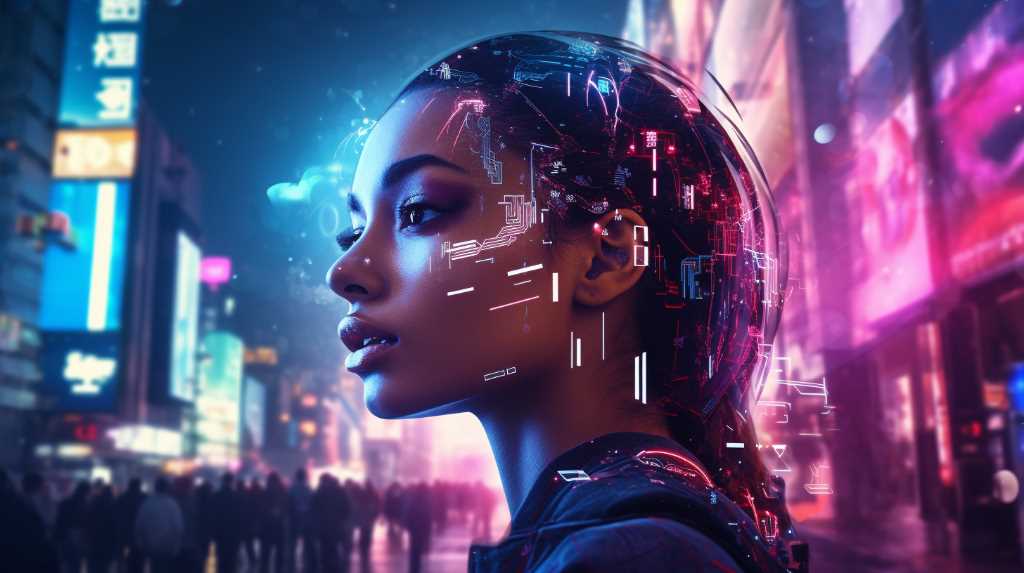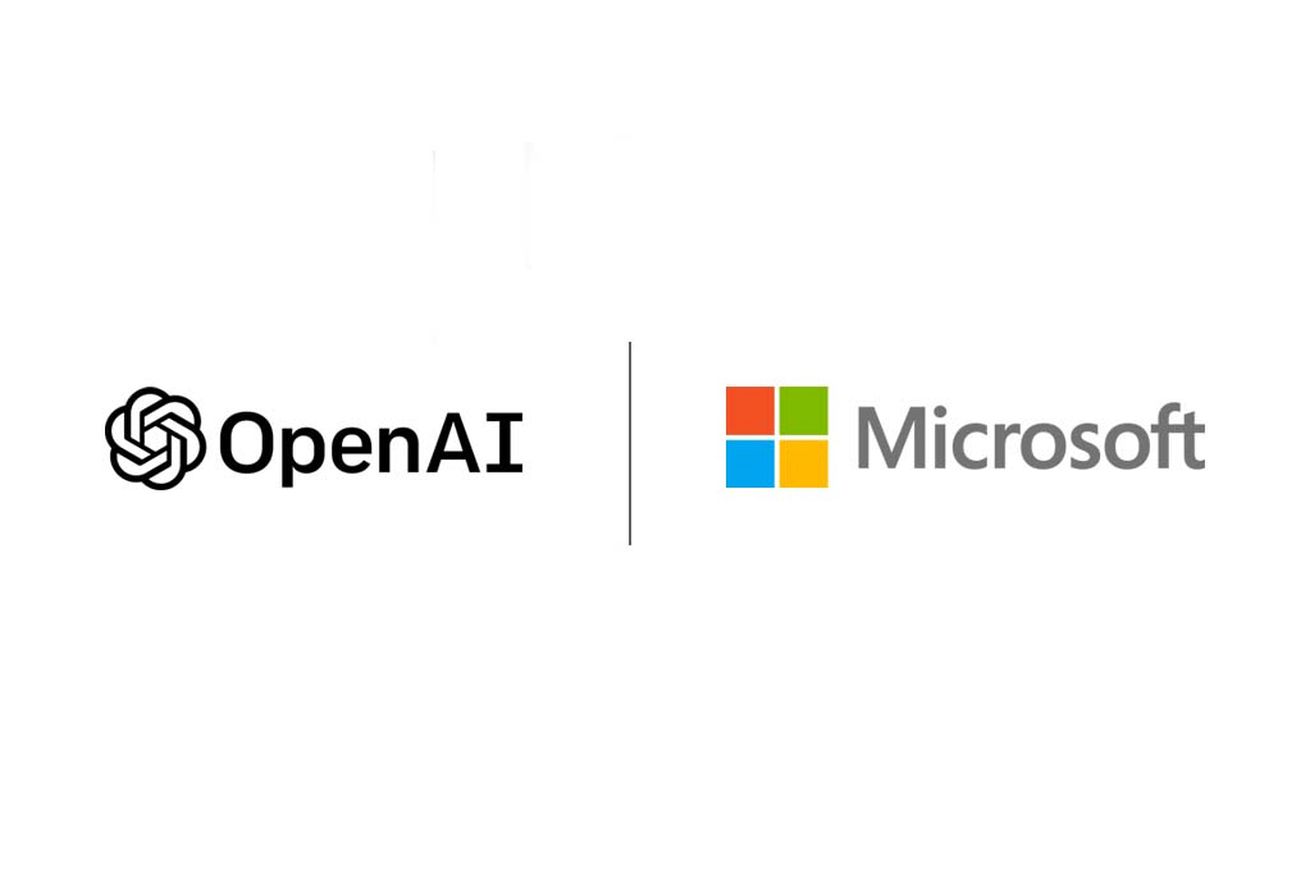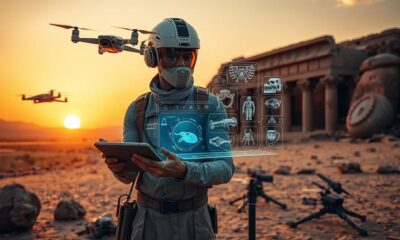AI Security
AI Security: The Unseen Guardian of Your Data

As a fan of AI, I am always impressed by how technology can safeguard our most important asset: data.
In this article, we will explore the world of AI security and how it serves as the unseen guardian of your data.
From enhancing data protection to real-time threat detection, AI is revolutionizing the way we mitigate risks and ensure the future of data security.
So, join me on this journey as we uncover the role of AI in safeguarding your valuable information.

Key Takeaways
- Increasing reliance on artificial intelligence has created a demand for robust AI security measures.
- AI enhances data protection through encryption and anomaly detection.
- AI provides organizations with a proactive approach to cybersecurity by analyzing user behavior patterns and network traffic.
- AI shapes the future of data security by promoting transparency and accountability.
The Growing Need for AI Security
The increasing reliance on artificial intelligence has created a pressing demand for robust AI security measures. As AI becomes more integrated into our daily lives and critical systems, it brings with it a host of security challenges. One of the main challenges is the potential for AI systems to be manipulated or exploited by malicious actors.
AI algorithms are vulnerable to adversarial attacks, where small modifications to input data can lead to incorrect or harmful outputs. Additionally, AI models can be reverse-engineered, leading to the theft of sensitive information and intellectual property.
To address these challenges, various AI security solutions have been developed. These include techniques such as robust training, which aims to make AI models more resilient to adversarial attacks, and secure model deployment, which focuses on protecting AI systems from unauthorized access.
How AI Is Enhancing Data Protection
As an AI security expert, I’ve witnessed firsthand how AI is revolutionizing data protection.

AI powered encryption is one of the key ways in which AI is enhancing data protection. Traditional encryption methods require manual configuration and management, making them vulnerable to human error. With AI powered encryption, the process is automated, ensuring that data is encrypted and protected at all times.
AI driven anomaly detection is another crucial aspect of data protection. By analyzing large amounts of data and learning normal patterns, AI can quickly detect any suspicious or abnormal behavior that may indicate a security breach. This enables organizations to respond swiftly and effectively to potential threats.
With AI enhancing data protection through encryption and anomaly detection, organizations can have peace of mind knowing that their data is secure.
Moving forward, let’s explore how AI is enabling real-time threat detection.

Real-Time Threat Detection With AI
I’ve witnessed AI in action, detecting threats in real-time. It’s fascinating to see how machine learning algorithms power this advanced form of cybersecurity.
Here are three ways AI enables real-time threat detection:
- Behavioral analysis: AI-powered systems analyze user behavior patterns and network traffic to identify anomalies that may indicate a potential threat.
- Pattern recognition: By analyzing vast amounts of data, AI algorithms can identify patterns associated with known threats and quickly detect similar patterns in real-time.
- Automated response: AI systems can automatically respond to threats by blocking suspicious IP addresses, isolating infected devices, or alerting security personnel.
With AI’s ability to continuously monitor and analyze data, it provides organizations with a proactive approach to cybersecurity. By detecting threats in real-time, AI minimizes the risk of data breaches and enables prompt action to mitigate potential damages.
Now, let’s explore how AI can further mitigate risks through enhanced security measures.

Mitigating Risks Through AI Security
To further enhance security measures, AI can effectively mitigate risks by utilizing advanced machine learning algorithms and continuous monitoring capabilities.
One way AI enhances security is through data encryption. By encrypting data using complex algorithms, AI ensures that sensitive information remains secure and protected from unauthorized access.
Additionally, AI-powered authentication systems provide an extra layer of security by verifying the identity of users before granting them access to sensitive data or systems.
AI also enables secure data sharing by implementing robust protocols that authenticate and authorize data transfers, ensuring that only authorized individuals or systems can access and use the shared data.

The Future of Data Security: AI’s Role
In the future of data security, AI will play a crucial role. As technology advances, so do the threats to our data. AI has the potential to revolutionize data security by leveraging its capabilities in analyzing vast amounts of information and detecting patterns that humans might miss.
Here are three key areas where AI will shape the future of data security:
- Ethical considerations in AI security:
- Ensuring AI algorithms are unbiased and don’t discriminate against certain individuals or groups.
- Establishing guidelines and regulations for the responsible use of AI in data security to address potential ethical concerns.
- Promoting transparency and accountability in AI systems to build trust among users.
- AI-driven data privacy measures:
- Developing AI algorithms that can identify potential privacy breaches and protect sensitive information.
- Implementing automated data anonymization techniques to safeguard personal data while still allowing meaningful analysis.
- Utilizing AI to continuously monitor and detect emerging privacy threats in real-time.
Frequently Asked Questions
What Are the MAIn Challenges Faced in Implementing AI Security Measures?
Implementing AI security measures comes with challenges such as ensuring data privacy, detecting and preventing cyber threats, and maintaining system integrity. These obstacles require meticulous planning, robust infrastructure, and continuous monitoring to mitigate risks effectively.
How Does AI Contribute to the Overall Improvement of Data Protection?
By analyzing patterns and detecting anomalies, AI strengthens data protection. Its role in enhancing cybersecurity is crucial, as it continuously monitors and adapts to evolving threats, safeguarding our valuable information.

Are There Any Limitations or Potential Vulnerabilities Associated With Real-Time Threat Detection Using Ai?
Real-time threat detection using AI has limitations and potential vulnerabilities. These include false positives, evasion tactics, and adversarial attacks. Understanding these weaknesses is crucial for developing robust and effective AI security systems.
Can You Provide Examples of Specific Risks That Can Be Effectively Mitigated Through the Use of AI Security?
Using AI security effectively mitigates specific risks such as insider threats and phishing attacks. It empowers organizations to proactively identify and address these vulnerabilities, ensuring the protection of sensitive data.
How Do You Envision Ai’s Role in Data Security Evolving in the Future?
In the future, AI’s role in data security will evolve to address potential risks and benefits. It will analyze and detect threats more efficiently, providing proactive protection for our valuable data.
Conclusion
In conclusion, the use of AI security has become increasingly crucial in safeguarding our data. With its ability to enhance data protection and provide real-time threat detection, AI is proving to be an unseen guardian against cyber risks.

One interesting statistic that highlights the effectiveness of AI security is that it can detect 85% of cyber attacks, significantly reducing the potential risks and ensuring the safety of our valuable information.
As we move forward, AI’s role in data security will continue to evolve and play a vital role in mitigating future risks.
Hanna is the Editor in Chief at AI Smasher and is deeply passionate about AI and technology journalism. With a computer science background and a talent for storytelling, she effectively communicates complex AI topics to a broad audience. Committed to high editorial standards, Hanna also mentors young tech journalists. Outside her role, she stays updated in the AI field by attending conferences and engaging in think tanks. Hanna is open to connections.
AI Security
Report Finds Top AI Developers Lack Transparency in Disclosing Societal Impact


Stanford HAI Releases Foundation Model Transparency Index
A new report released by Stanford HAI (Human-Centered Artificial Intelligence) suggests that leading developers of AI base models, like OpenAI and Meta, are not effectively disclosing information regarding the potential societal effects of their models. The Foundation Model Transparency Index, unveiled today by Stanford HAI, evaluated the transparency measures taken by the makers of the top 10 AI models. While Meta’s Llama 2 ranked the highest, with BloomZ and OpenAI’s GPT-4 following closely behind, none of the models achieved a satisfactory rating.
Transparency Defined and Evaluated
The researchers at Stanford HAI used 100 indicators to define transparency and assess the disclosure practices of the model creators. They examined publicly available information about the models, focusing on how they are built, how they work, and how people use them. The evaluation considered whether companies disclosed partners and third-party developers, whether customers were informed about the use of private information, and other relevant factors.
Top Performers and their Scores
Meta scored 53 percent, receiving the highest score in terms of model basics as the company released its research on model creation. BloomZ, an open-source model, closely followed at 50 percent, and GPT-4 scored 47 percent. Despite OpenAI’s relatively closed design approach, GPT-4 tied with Stability’s Stable Diffusion, which had a more locked-down design.
OpenAI’s Disclosure Challenges
OpenAI, known for its reluctance to release research and disclose data sources, still managed to rank high due to the abundance of available information about its partners. The company collaborates with various companies that integrate GPT-4 into their products, resulting in a wealth of publicly available details.

Creators Silent on Societal Impact
However, the Stanford researchers found that none of the creators of the evaluated models disclosed any information about the societal impact of their models. There is no mention of where to direct privacy, copyright, or bias complaints.
Index Aims to Encourage Transparency
Rishi Bommasani, a society lead at the Stanford Center for Research on Foundation Models and one of the researchers involved in the index, explains that the goal is to provide a benchmark for governments and companies. Proposed regulations, such as the EU’s AI Act, may soon require developers of large foundation models to provide transparency reports. The index aims to make models more transparent by breaking down the concept into measurable factors. The group focused on evaluating one model per company to facilitate comparisons.
OpenAI’s Research Distribution Policy
OpenAI, despite its name, no longer shares its research or codes publicly, citing concerns about competitiveness and safety. This approach contrasts with the large and vocal open-source community within the generative AI field.
The Verge reached out to Meta, OpenAI, Stability, Google, and Anthropic for comments but has not received a response yet.
Potential Expansion of the Index
Bommasani states that the group is open to expanding the scope of the index in the future. However, for now, they will focus on the 10 foundation models that have already been evaluated.
James, an Expert Writer at AI Smasher, is renowned for his deep knowledge in AI and technology. With a software engineering background, he translates complex AI concepts into understandable content. Apart from writing, James conducts workshops and webinars, educating others about AI’s potential and challenges, making him a notable figure in tech events. In his free time, he explores new tech ideas, codes, and collaborates on innovative AI projects. James welcomes inquiries.
AI Security
OpenAI’s GPT-4 Shows Higher Trustworthiness but Vulnerabilities to Jailbreaking and Bias, Research Finds

New research, in partnership with Microsoft, has revealed that OpenAI’s GPT-4 large language model is considered more dependable than its predecessor, GPT-3.5. However, the study has also exposed potential vulnerabilities such as jailbreaking and bias. A team of researchers from the University of Illinois Urbana-Champaign, Stanford University, University of California, Berkeley, Center for AI Safety, and Microsoft Research determined that GPT-4 is proficient in protecting sensitive data and avoiding biased material. Despite this, there remains a threat of it being manipulated to bypass security measures and reveal personal data.

Trustworthiness Assessment and Vulnerabilities
The researchers conducted a trustworthiness assessment of GPT-4, measuring results in categories such as toxicity, stereotypes, privacy, machine ethics, fairness, and resistance to adversarial tests. GPT-4 received a higher trustworthiness score compared to GPT-3.5. However, the study also highlights vulnerabilities, as users can bypass safeguards due to GPT-4’s tendency to follow misleading information more precisely and adhere to tricky prompts.
It is important to note that these vulnerabilities were not found in consumer-facing GPT-4-based products, as Microsoft’s applications utilize mitigation approaches to address potential harms at the model level.
Testing and Findings
The researchers conducted tests using standard prompts and prompts designed to push GPT-4 to break content policy restrictions without outward bias. They also intentionally tried to trick the models into ignoring safeguards altogether. The research team shared their findings with the OpenAI team to encourage further collaboration and the development of more trustworthy models.

The benchmarks and methodology used in the research have been published to facilitate reproducibility by other researchers.
Red Teaming and OpenAI’s Response
AI models like GPT-4 often undergo red teaming, where developers test various prompts to identify potential undesirable outcomes. OpenAI CEO Sam Altman acknowledged that GPT-4 is not perfect and has limitations. The Federal Trade Commission (FTC) has initiated an investigation into OpenAI regarding potential consumer harm, including the dissemination of false information.
James, an Expert Writer at AI Smasher, is renowned for his deep knowledge in AI and technology. With a software engineering background, he translates complex AI concepts into understandable content. Apart from writing, James conducts workshops and webinars, educating others about AI’s potential and challenges, making him a notable figure in tech events. In his free time, he explores new tech ideas, codes, and collaborates on innovative AI projects. James welcomes inquiries.
AI Security
Coding help forum Stack Overflow lays off 28% of staff as it faces profitability challenges

Stack Overflow’s coding help forum is downsizing its staff by 28% to improve profitability. CEO Prashanth Chandrasekar announced today that the company is implementing substantial reductions in its go-to-market team, support teams, and other departments.
Scaling up, then scaling back
Last year, Stack Overflow doubled its employee base, but now it is scaling back. Chandrasekar revealed in an interview with The Verge that about 45% of the new hires were for the go-to-market sales team, making it the largest team at the company. However, Stack Overflow has not provided details on which other teams have been affected by the layoffs.
Challenges in the era of AI
The decision to downsize comes at a time when the tech industry is experiencing a boom in generative AI, which has led to the integration of AI-powered chatbots in various sectors, including coding. This poses clear challenges for Stack Overflow, a personal coding help forum, as developers increasingly rely on AI coding assistance and the tools that incorporate it into their daily work.

Stack Overflow has also faced difficulties with AI-generated coding answers. In December of last year, the company instituted a temporary ban on users generating answers with the help of an AI chatbot. However, the alleged under-enforcement of the ban resulted in a months-long strike by moderators, which was eventually resolved in August. Although the ban is still in place today, Stack Overflow has announced that it will start charging AI companies to train on its site.
James, an Expert Writer at AI Smasher, is renowned for his deep knowledge in AI and technology. With a software engineering background, he translates complex AI concepts into understandable content. Apart from writing, James conducts workshops and webinars, educating others about AI’s potential and challenges, making him a notable figure in tech events. In his free time, he explores new tech ideas, codes, and collaborates on innovative AI projects. James welcomes inquiries.
-

 AI News4 weeks ago
AI News4 weeks agoAI-Assisted Grant Writing: Improving Success Rates for Educational Institutions
-

 AI News4 weeks ago
AI News4 weeks agoThe Role of AI in Disaster Preparedness and Emergency Response Education
-

 AI News4 weeks ago
AI News4 weeks agoThe Impact of AI on Privacy Laws and Regulations
-

 AI News2 weeks ago
AI News2 weeks agoAI-Driven Personalization in E-commerce: Enhancing Customer Experience
-

 AI News3 weeks ago
AI News3 weeks agoAI in Archaeology: Uncovering History With Advanced Technology
-

 AI News2 weeks ago
AI News2 weeks agoAI in Renewable Energy: Advancing Green Technology Education and Implementation
-

 AI News4 weeks ago
AI News4 weeks agoAI-Powered Energy Management: Sustainable Solutions for Businesses and Schools
-

 AI News3 weeks ago
AI News3 weeks agoAI in Library Sciences: Transforming Information Management and Access














